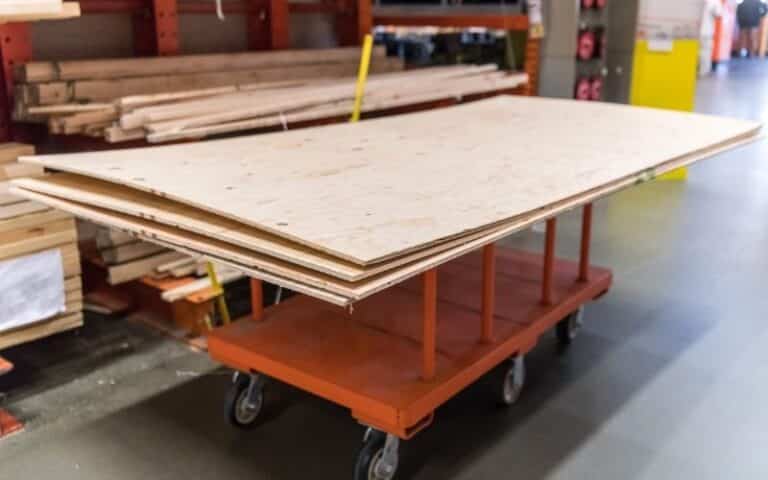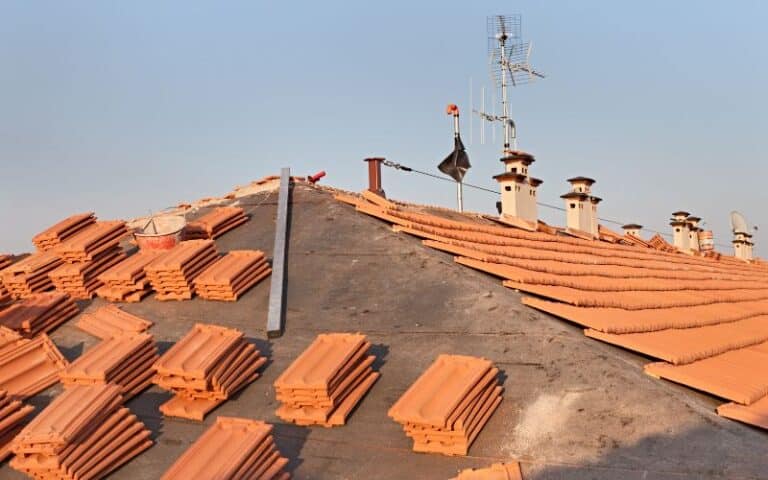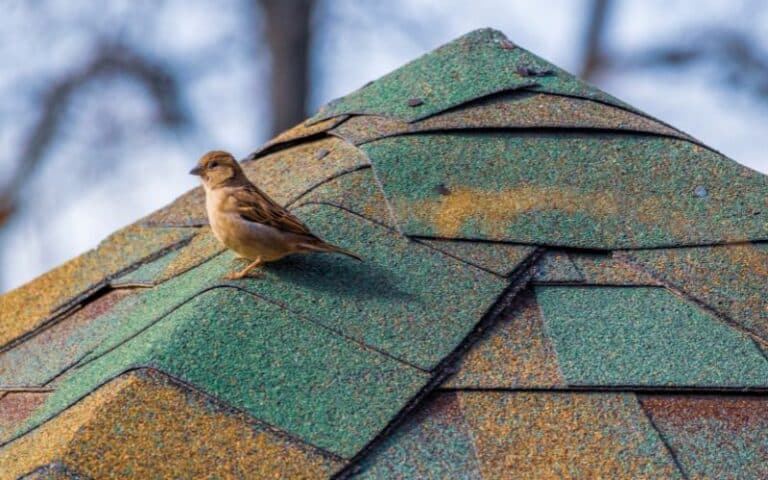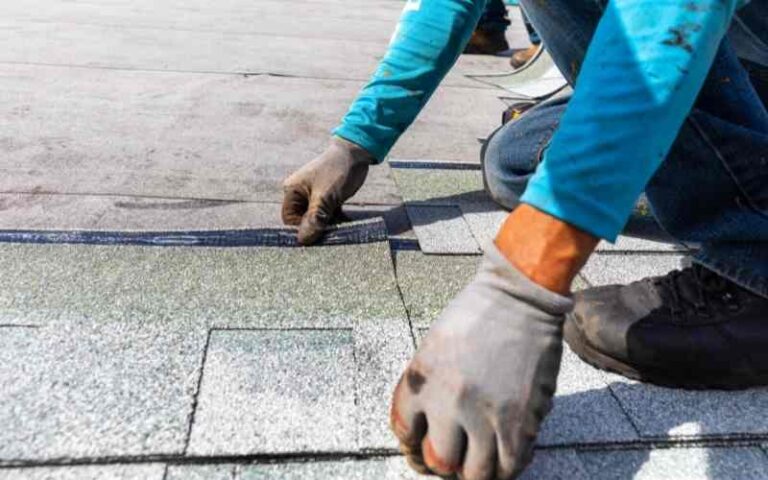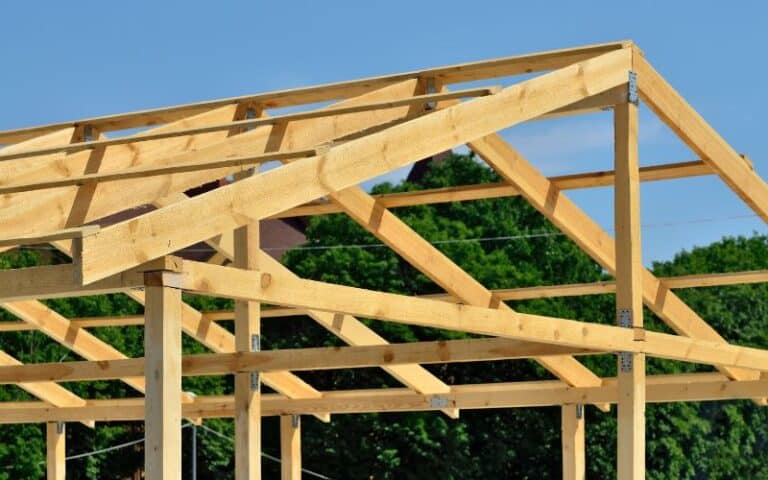Underlayment is crucial for roof installation when changing an old roof or building a new house.
Roof underlayments are of different varieties, and, like every decision-making process, selecting the best roof underlayment for your roofing is a tough decision.
Felt tar paper is the most common underlayment for roofing and is budget-friendly. Though cheap, can you use tar paper comfortably as a roof underlayment?
You can use tar paper underlayment for your roofing, but you must weigh your priorities against its pros and cons. You cannot leave tar paper open during installation for too long because of its reaction to the weather. These could increase the cost of labor as you would have to keep replacing tar paper torn during installation.
Ready for a Roofing Quiz?
Can You Use Tar Paper as Underlayment?
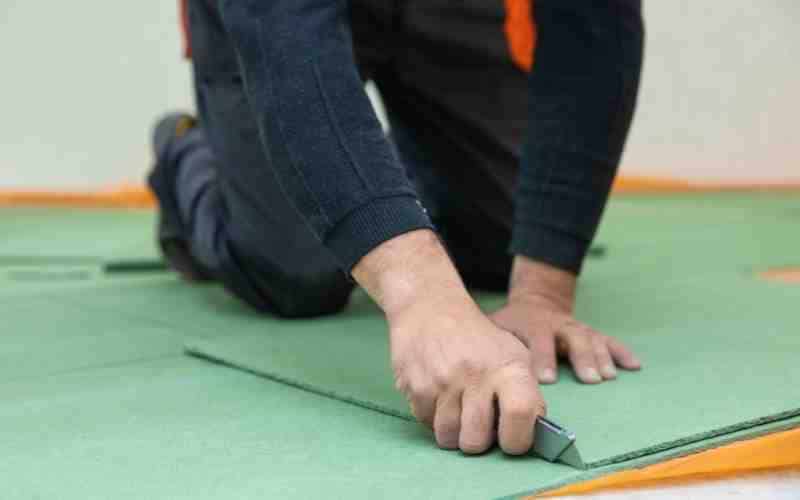
You can use felt tar paper as an underlayment. It is the most common type of roofing underlay. You may also know it as roofing felt.
This underlay comprises natural and synthetic materials with a protective bitumen coating that repels water. You should not mistake its water-resistance property as waterproof.
Though you can use tar paper roofing underlayment, it is difficult to install. As some contractors place the underlayment, others will have to cover the underlayment immediately.
This is because of the effects of the weather on the tar paper. In addition, tar paper is rather heavy and thick, making it a rigid underlayment to install.
However, it is a good choice if you are on a budget.
Though it might be cheaper than other underlayments, ensure you have carefully considered other cons, like its inability to hold moisture for a long time.
It is also rather slippery and risky to walk on during installation if you’re not an expert.
What Are the Pros and Cons of Using Tar Paper as Underlayment?
Like any other thing, tar paper has disadvantages and benefits. Using tar paper in your roofing underlayment is a cheap option, but then, it will not last as long as its alternative.
People use what they are familiar with. Felt tar paper is more popular than other roof underlayments, which may also be why you want to use it.
But before purchasing it, make sure you know how long it will last.
Below are the pros and cons of the tar paper underlayment:
#1. Pros of Tar Paper Underlayment
#1. Serves as Moisture Barrier
Tar paper roofing can protect your roof from water leaks. It’s a good choice if you’re looking for a moisture barrier.
#2. Budget-Friendly
Tar paper underlayment is more cost-effective than other roof underlayment types. Tar paper roofing is cheaper to produce, so the price is lower than its alternatives.
This is also why it is very well known. Since the cost of building is expensive, you could cut costs from the underlayment.
#3. Availability
Because of its price and popularity, you can purchase tar paper at most home equipment stores. As a result, it is often more readily available than other roof underlayments.
#4. Multipurpose Underlayment
Unlike other roofing underlays, you can install felt tar paper under your floor, walls, and other areas.
#2. Cons of Tar Paper Underlayment
#1. Tears Easily
There is a high tendency that tar paper will tear from windy weather. It can also get torn if there is a lot of strain when stretching the material over the roof.
#2. Exposure Limit
You cannot expose tar paper in the open for too long. If the contractors cannot place the shingles in time, the tar paper will shrink and stiffen.
It can cause roof leakage and release toxic gases if you expose it to water for a long time.
#3. Constant Maintenance
Tar paper wears fast over time, and this will require constant maintenance. In addition, once the weather factors like heat constantly hit the tar paper through the shingles, it will shrink.
Consequently, it will cause leakage in the roof, which would require constant maintenance.
#4. Slippery Surface
The slippery surface of tar paper roofing underlayment makes installation difficult. Contractors may be at risk if not careful. Its surface could also cause it to get torn since it has no steady grip.
#5. Weight
Tar paper is quite heavy, and this slows down the installation process. It also adds more weight to the roof.
Is Synthetic Underlayment Better Than Tar Paper?
This depends on the factors you will consider when selecting your underlayment.
Synthetic underlayment has more advantages than tar paper, is more modern, and covers some risks involved with tar paper.
For example, synthetic underlay does not crack in cold temperatures or wrinkles from moisture, unlike felt tar paper.
Synthetic paper is new to the market and not so popular as tar paper for roofing underlayment. It is an improved version of the tar paper underlayment, though expensive.
It is light and covers more area in a roll than tar paper. Though synthetic underlay is more delicate, it is also strong and, like tar paper, also serves as a moisture barrier.
Its thin material adds a minor burden to the weight of the roof.
Synthetic roof underlay has a higher tear resistance than tar paper roofing when open to wind elements. It also has a firm grip since it is non-skid.
This makes it easier to work with and keeps it tear-free during installation. Synthetic paper is also resistant to fungal mold from holding moisture for long since it is artificial.
So, no risk of toxic gases for you with this underlayment.
Choosing between tar paper and other types of roofing underlayment can be a frustrating task if you don’t know what to consider.
So, here are some questions you should weigh before making your selection:
- What kind of weather is in your location? How will it affect the underlayment?
- What is your budget for the roof underlayment?
- Do you need a durable underlayment, or would you rather spend on replacement?
These questions help you decide which underlay is better for your roofing. For example, synthetic paper is rather costly but worth the durability it offers.
But if you are on a tight budget, you should go for tar paper roof underlayment.
What Can Be Used as Underlayment?
There are several roof underlayments. Tar paper, synthetic, and rubber roof underlayments are the most used. You can also use underlays in flooring, and there are diverse types of underlayments for floors.
#1. Roofing Underlayments
There are a few types of roofing underlayments used for roofing. Some of those are:
- Roofing felt
- Tar paper
- Rubberized asphalt
- Synthetic paper.
Roofing felt, and tar paper is similar and has almost the same qualities. The only difference is that roofing felt comprises asphalt, while tar is the main component of tar paper.
Rubberized asphalt has rubber features that make them seal faster than other roof underlayments. Synthetic underlayments consist of a synthetic polymer.
They are lighter than other roof underlayments and do not absorb moisture.
#2. Flooring Underlayments
Underlays for flooring are different for each type of flooring. Some of them are:
- Tile floors; Cement board underlayment.
- Laminate floors; Foam underlayment, acoustical underlayment.
- Hardwood floors; Felt underlayment, cork underlayment, rubber underlayment, and red rosin paper underlayment.
- Vinyl floors; Plywood underlayment.
Can Tar Paper Be Used as a Moisture Barrier?
Yes, you can use tar paper as a moisture barrier, but only for roofing, as long as it is not open to moisture elements for too long.
Though you can use tar paper as an underlayment for flooring, it is not advisable to use it as a moisture barrier.
Unlike roofs, floors are not constantly open to the air and natural drying elements.
So when tar paper holds moisture for too long, it reacts and releases toxic gases that could cause headaches, cough, and other health issues.
Conclusion
You can use tar paper as an underlayment, but it is not the best option as it is not very durable. However, it is cost-effective, unlike the synthetic alternative.
Synthetic underlays are more expensive but last longer. So, if you are working on a small budget, tar paper is a good choice for your roofing.

